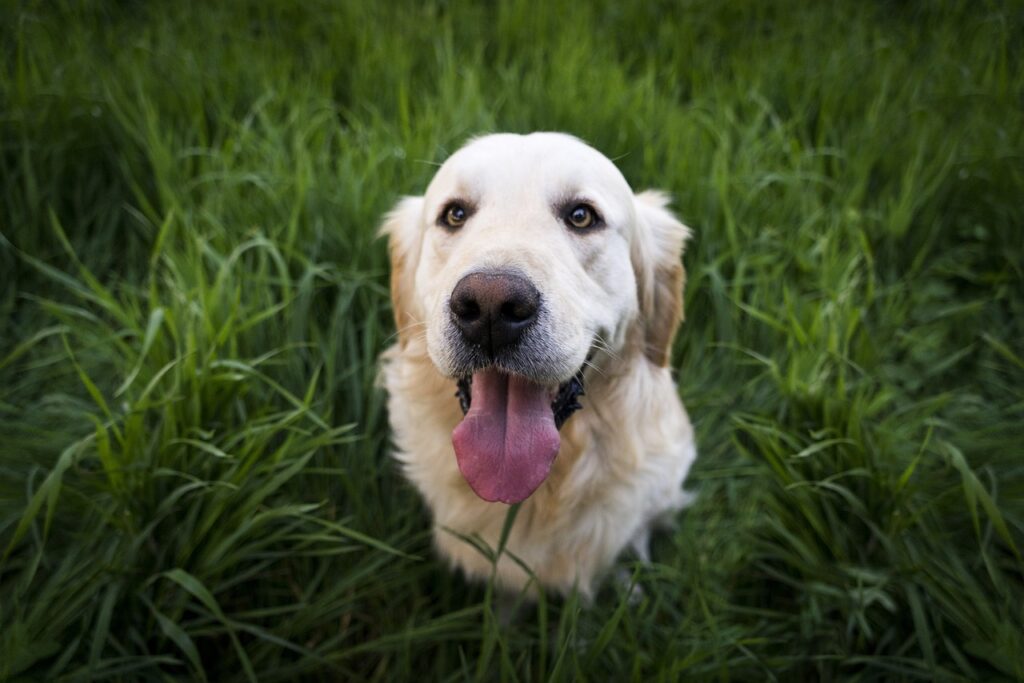Can Dogs Eat Kale? – Yes, They can
Yes, dogs can safely eat kale in moderation. Kale is a nutrient-dense leafy green that can provide a plethora of vitamins and minerals beneficial to your dog’s health. However, it should be introduced to your dog’s diet cautiously because it contains several compounds that can cause harm in large quantities. It’s essential to serve kale properly—cooked and without any added spices or oils—to ensure it’s easily digestible for your furry friend.
Can Puppies Eat Kale?
Yes, puppies can eat kale, but even more caution is necessary. Their developing digestive systems are sensitive, so introducing kale should be done very gradually and in tiny amounts. The leafy green can be a healthy addition to your puppy’s diet if your vet approves it and you follow proper serving guidelines.
Things to consider when feeding kale to puppies?
When feeding kale to puppies, you must consider their delicate digestive systems. Only provide kale that has been thoroughly washed and cooked to prevent digestive upset. Start with small bits of kale to see how they react and always observe for any signs of trouble. If you notice any negative reactions, such as vomiting or diarrhea, consult your vet immediately. Additionally, calcium and other nutrients in kale should be balanced with their overall diet to avoid any nutritional imbalances.
Nutritional Benefits of Kale for Dogs – Why Kale is good for Dogs?
Vitamins and Minerals
Kale is laden with vitamins like A, K, and C, which are essential for maintaining good vision, bone health, and immune function in dogs.
Fiber
The fiber in kale aids in digestion and helps keep bowel movements regular, which can benefit dogs with digestive issues.
Antioxidants
Antioxidants in kale can help neutralize free radicals, potentially reducing the risk of chronic diseases and improving overall health.
Low in Fat and Calories
For dogs on a weight management plan, kale is an excellent option as it is low in fat and calories but high in nutrients.
Iron
Kale provides a decent amount of iron, which is crucial in preventing anemia and promoting healthy blood circulation in dogs.
Potential Allergies: Can Dogs Be Allergic to Kale?
While kale allergies in dogs are rare, they can occur. If you’re introducing kale to your dog for the first time, do so gradually and monitor for any signs of an allergic reaction.
Symptoms of Kale Allergies in Dogs
- Itchy skin: Observe if your dog starts to scratch more than usual after consuming kale.
- Swelling: Look out for any unusual swelling around the face or paws, which may indicate an allergic response.
- Gastrointestinal upset: Monitor for symptoms like vomiting or diarrhea, as these can be signs of an allergic reaction to kale.
What to Do If Your Dog Shows Symptoms?
- Immediate cessation: Stop feeding your dog kale and remove it from their diet.
- Veterinary consultation: Seek advice from your veterinarian if symptoms persist or are severe.
- Alternative foods: Consider other vegetables recommended by your vet that are less likely to cause an allergic reaction.
Recommended Amount: How Much Kale Can a Dog Consume?
The recommended quantity of kale for a dog varies based on size, breed, and individual health. As a general rule of thumb, it should only be a small portion of their overall diet. Start with a small piece of kale as a treat and observe how your dog reacts before making it a regular part of their meals.
Things to Consider When Feeding Kale to Dogs
Be aware of the high calcium oxalate content in kale, which can lead to kidney and bladder stones when consumed in large amounts. Also, the presence of isothiocyanates in kale may cause gastric irritation in some dogs. Always serve kale in moderation as part of a well-balanced diet.
How to Feed Kale to Dogs: A Quick Guide
Kale can be a delicious and healthful treat for your dog when prepared correctly. Gently cooked kale, stripped of stems and leaves, can provide your dog with a punch of nutrition and an enjoyable eating experience.
Simple Steamed Kale
Steam kale leaves until they are soft. Let them cool and chop them into bite-size pieces before offering them to your dog.
Kale and Pumpkin Puree
Puree cooked kale with plain pumpkin for a tasty, fiber-rich treat. Serve in small amounts with their regular food.
Homemade Kale Dog Biscuits
Combine pureed kale with whole wheat flour, eggs, and unsweetened applesauce to bake nutritious homemade dog biscuits.
Conclusion
In conclusion, kale can be a healthy addition to your dog’s diet when used as a supplement in moderation. Ensure it’s adequately prepared and introduced gradually to your pet’s meals. Always watch for any unusual reactions, and remember to balance it with a diverse and nutritionally complete diet. If in doubt, consulting with your veterinarian can guide you toward the safest ways to include kale or any new food in your dog’s eating plan.

